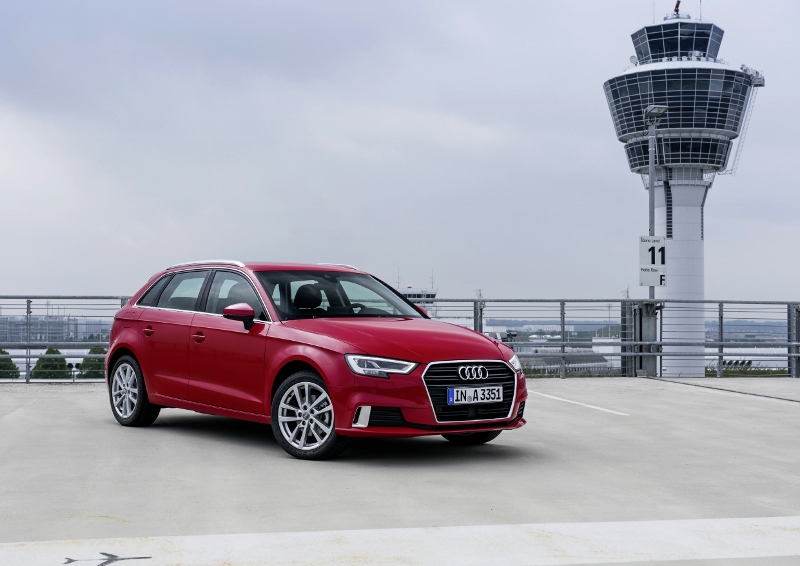First Drive: Audi A3
A subtle update for Audi’s best-seller, but that’s all it needed, says Alex Grant.
Sector: Lower Medium Price: £21,515–£35,930 Fuel: 47.9–74.3mpg CO2: 99–134g/km
This year marks two decades since Audi’s first A3 launched in the UK. Arriving as exactly the product buyers wanted at that size, it’s set out the formula for what’s now a thriving segment. But that means pushing harder than ever to stay on top.
What was a three-door-only model range has swelled since, now comprising four bodystyles. It’s also one of the UK’s best-selling cars, surprisingly close in price to the Golf and a staple part of Audi’s fleet line-up. That’s all despite being the oldest model in the segment, until now.
This isn’t a reinvention, of course. There’s a mild update of the styling to match the A4, and the bulk of the differences are focused on new technology. All UK cars get xenon headlights, cruise control and a pop-up infotainment display with Apple and Android connectivity, which puts navigation on the central display. However, with no touchscreen, it’s one of the clumsiest applications of this technology – mainstream models are doing a better job.
However, UK orders are heavily weighted towards the Sport and S line trims, helped by the 1.6-litre diesel being available on both. Drivers with less of a need for sporty styling can opt into the SE Technik, though, getting parking sensors and navigation but not the economy-damaging bigger wheels.
There are useful new technologies, but most are optional. The A3 can now be equipped with a built-in SIM card for internet-connected services such as live traffic, Google Maps data and news and weather services, and the TT’s 12.3-inch ‘Virtual Cockpit’ digital display is available too. Add the lot, and the price jumps by £1,395. Also, while the Golf features autonomous braking and adaptive cruise control across most of the range, it’s a £475 option here, and only SE Technik versions get rear parking sensors.
Diesel engines are almost unchanged. The 1.6 TDI is offered in all versions, and remains a quiet, lively unit with CO2 emissions from 99g/km – though Sport and S line versions are less efficient, and there’s no longer an 89g/km Ultra model. Performance is markedly better on the 148bhp 2.0 TDI, particularly at motorway speeds, and there’s not much of an economy sacrifice for it.
It’s the petrol options which have just got interesting. The Golf BlueMotion’s 113bhp three-cylinder engine is available on the A3 for the first time, likely to almost match the diesels on CO2 emissions and undercut the 1.6 TDI on price. Surprisingly potent, it’s only motorway cruising where the lack of capacity starts to show up.
Regardless of engine choice, the standard suspension setup is the best of the lot. There’s a good platform underneath the A3, and agility benefits of the no-cost Sport or S line suspension are offset by unsettled ride quality.
Audi has had 20 years to perfect its offering in this segment, and it’s left rivals trying to catch up. This might be a nip and tuck, but it’s really all the A3 needed.
Verdict:
A benchmark car in a tough segment, the A3 is reaffirming its strengths against new competition. But the real benefits of Audi’s latest work mean adding plentiful options.


















